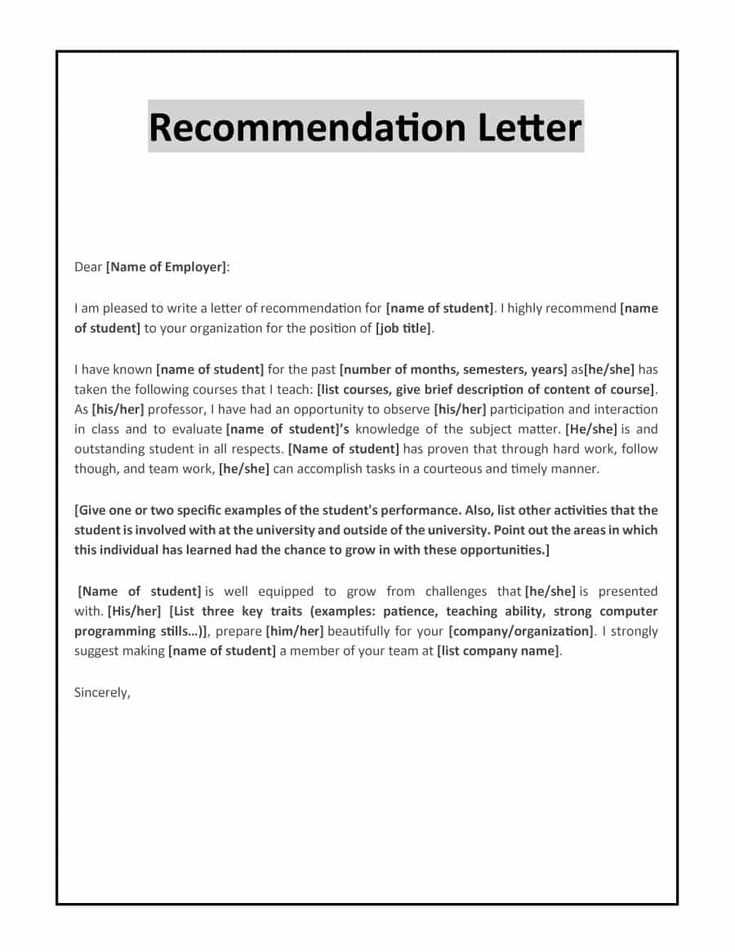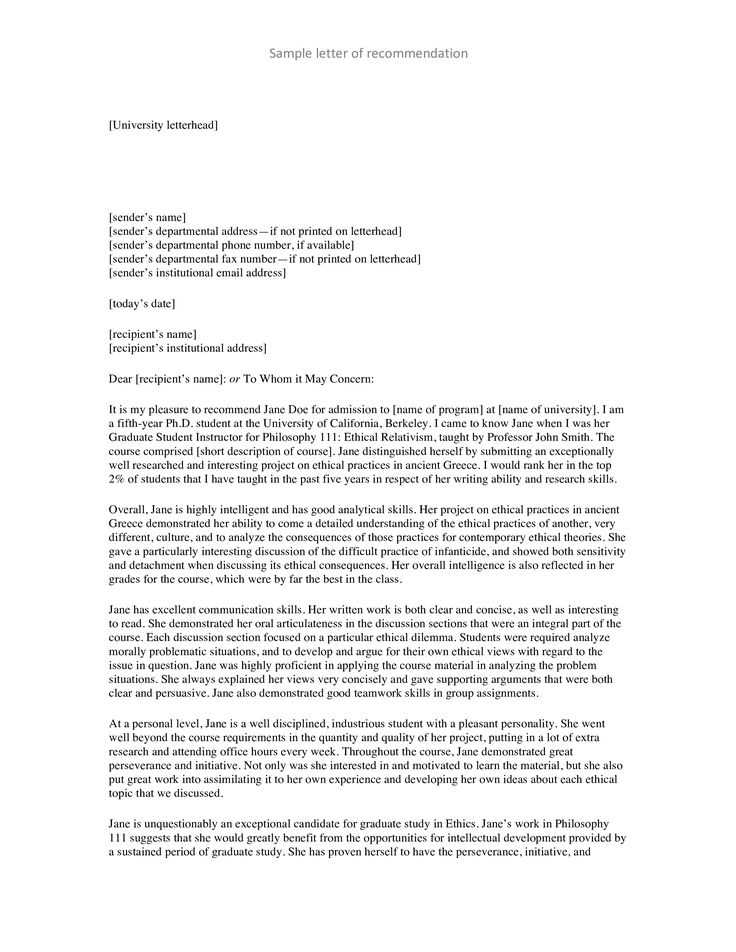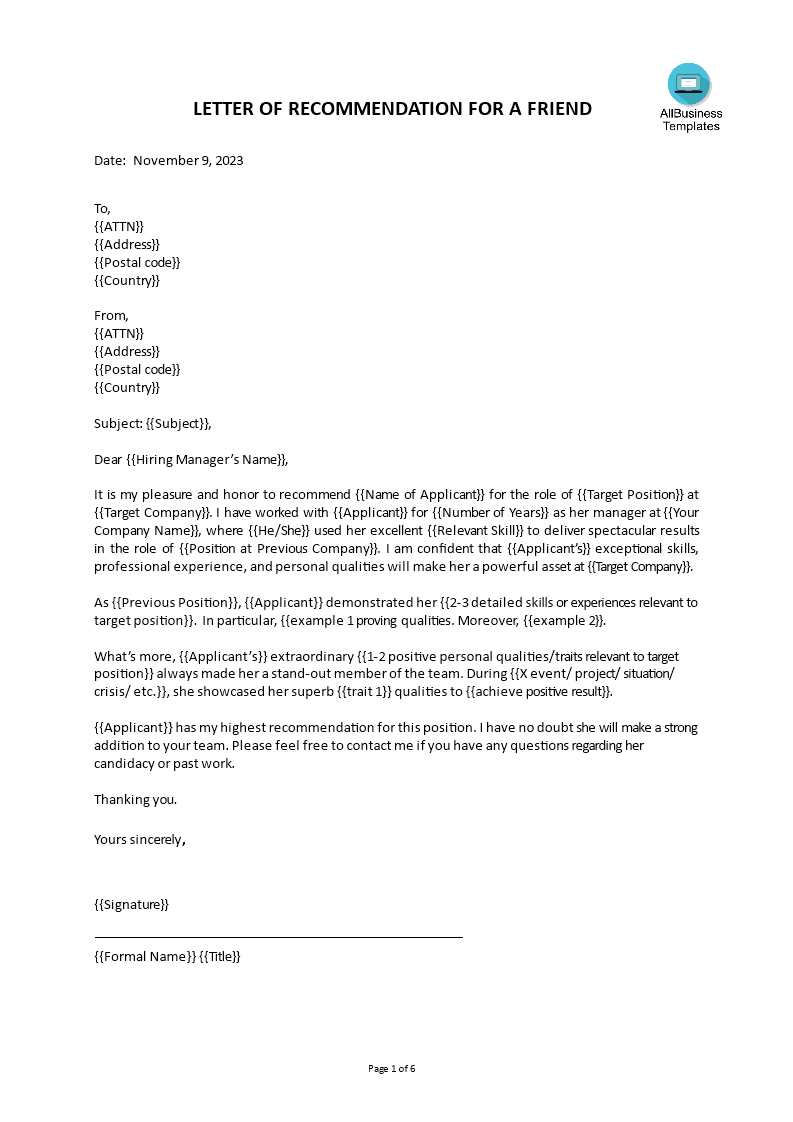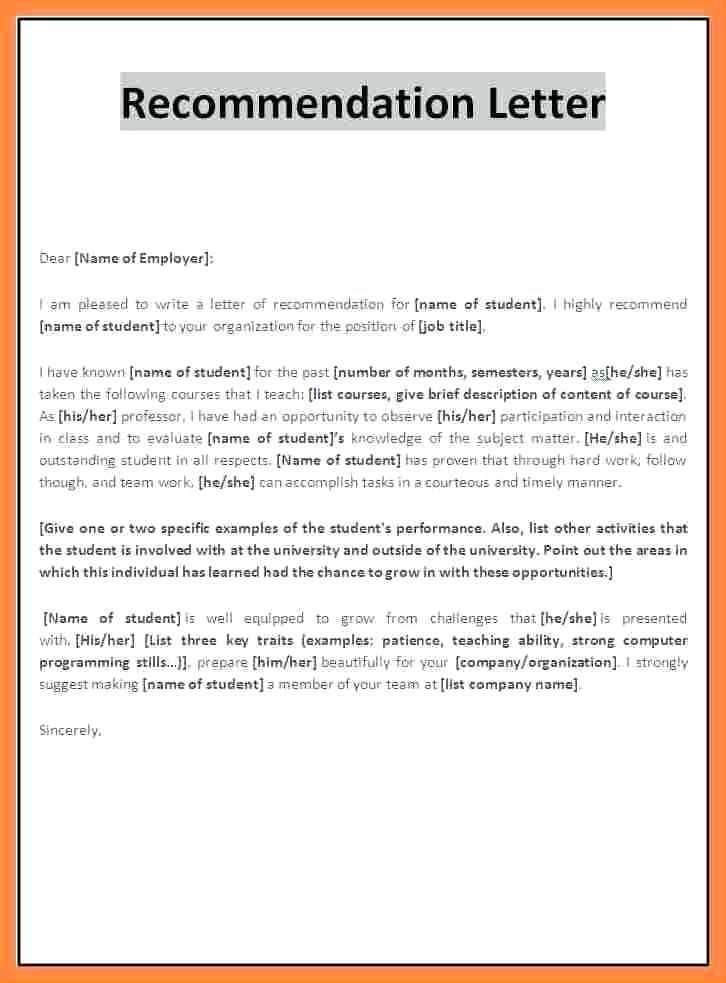Simple Letter of Recommendation Template for Easy Use

When you need to vouch for someone’s skills or qualifications, crafting a well-structured endorsement is essential. This document serves to highlight the individual’s strengths, experiences, and character, offering a credible perspective to potential employers, schools, or organizations. A properly composed endorsement should be clear, concise, and tailored to the purpose at hand.
Key Elements to Include
Every endorsement should feature several critical components to ensure its effectiveness. These parts not only provide structure but also convey important information about the subject in an organized manner.
- Introduction: Begin by introducing yourself and stating your relationship to the individual. This helps set the context for the rest of the document.
- Background: Highlight the person’s qualifications, skills, and experiences that are relevant to the situation.
- Specific Examples: Providing concrete instances where the individual demonstrated excellence is key. It strengthens the credibility of the endorsement.
- Conclusion: End with a strong, final statement that reaffirms your support for the individual.
How to Personalize the Document
Personalization adds value to any endorsement. Avoid generic statements by focusing on specific traits or accomplishments that make the individual stand out. Tailor the content to match the goals of the recipient. For example, if the purpose is to support a job application, emphasize relevant skills and experiences. On the other hand, if it’s for a scholarship or academic opportunity, focus on the person’s academic achievements or potential.
Common Pitfalls to Avoid


While crafting an endorsement, there are some common mistakes to watch out for. These errors can dilute the message and reduce the effectiveness of the document.
- Overgeneralization: Avoid vague language or empty praise. Specificity is crucial to make the endorsement meaningful.
- Excessive Length: Keep the endorsement concise. A few well-written paragraphs are usually sufficient to make a strong case.
- Lack of Focus: Stay on topic and ensure the document serves its intended purpose without unnecessary diversions.
Final Thoughts on Crafting a Strong Endorsement

A well-crafted endorsement has the power to make a significant impact. By focusing on the key elements, avoiding common mistakes, and personalizing the content, you can ensure that your document effectively highlights the individual’s strengths and qualifications. Whether it’s for a professional role, an academic pursuit, or another important opportunity, a solid endorsement can make a lasting impression.
Effective Endorsement Document Creation and Key Insights
Crafting an impactful endorsement is crucial when you want to highlight an individual’s qualities or achievements. Whether the goal is to support an application, recommend someone for a role, or vouch for a personal accomplishment, the structure and content of this document play a vital role. A well-written endorsement strengthens the subject’s candidacy and builds trust with the recipient, which is why understanding how to create a personalized, compelling narrative is important.
Core Components of a Strong Endorsement
An endorsement must cover specific components to ensure clarity and relevance. These elements guide the reader through the key points without overwhelming them with unnecessary information.
- Introduction: Clearly state your relationship with the individual and the context in which you know them. This offers credibility to the statement.
- Achievements: Focus on notable accomplishments, skills, or experiences that highlight why the individual stands out.
- Specific Examples: Provide real-life examples that demonstrate the person’s strengths in action. These examples add depth and authenticity to your words.
- Final Statement: End with a strong, definitive recommendation that emphasizes the individual’s qualifications and suitability for the role or purpose.
Personalizing the Document for Maximum Impact
One of the best ways to make an endorsement stand out is by customizing it to reflect the unique traits of the individual. Personalization ensures that the message is relevant and meaningful, and it helps avoid generic language that may weaken the impact of the endorsement. Focus on the person’s specific skills, accomplishments, or experiences that align with the needs or goals of the person or organization receiving the endorsement.
For example, if you’re supporting someone for a job position, highlight their professional expertise, work ethic, and specific skills related to the role. If the purpose is academic, focus more on the person’s intellectual capacity and achievements in their field of study.
Common Pitfalls to Avoid
When drafting an endorsement, there are several pitfalls to watch for that can undermine its effectiveness:
- Lack of Specificity: Avoid vague statements that don’t offer tangible evidence of the individual’s capabilities. Specific examples of their achievements or skills make the endorsement stronger.
- Over-Elaboration: A brief, concise endorsement is often more powerful than an overly detailed one. Stick to the most relevant and impactful information.
- Unfocused Message: Ensure that the content remains on point and aligned with the purpose of the endorsement. Avoid veering into unrelated topics.
By keeping these tips in mind, you can create a compelling endorsement that effectively conveys the individual’s qualifications and leaves a lasting impression on the recipient.